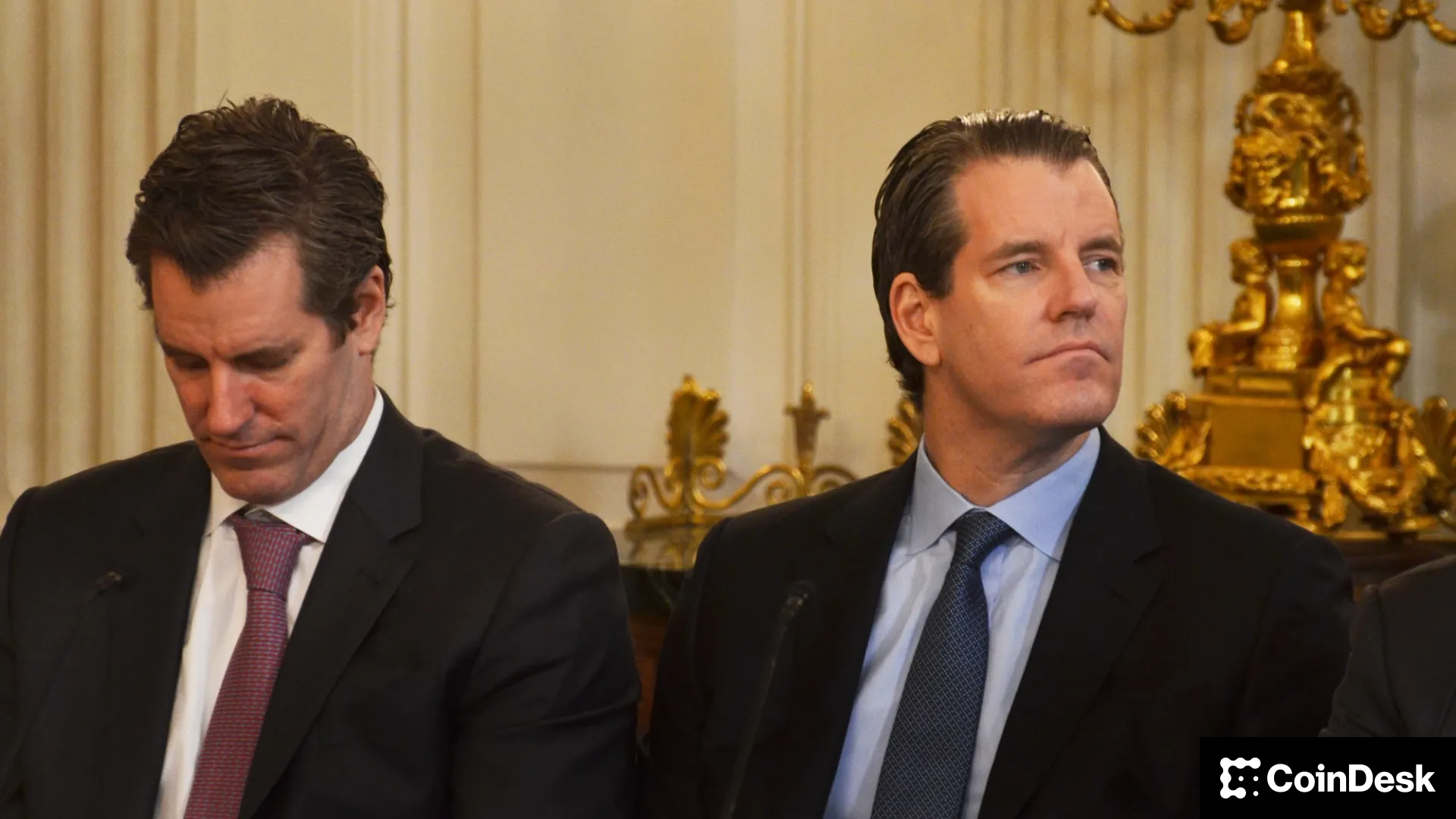Uncategorized
Not a Meme! DePIN Can Take Crypto Mainstream

For years, the crypto market has thrived on speculation, where excitement, hype and fleeting trends attract value instead of fundamentals. Investors have continually poured money into tokens fueled by viral moments, chasing rapid gains. Time and again, a select few of these investments soar to incredible heights, only to come crashing down. With over 33 million tokens in circulation, the competition to attract attention gets harder and harder and investor attention is ever more fleeting. But DePIN can change this. With compelling businesses attracting real customers and revenue built on well designed token economics, DePIN can set a new standard of fundamentals in crypto.
As our DePIN Token Economics Report outlines, Decentralized Physical Infrastructure Networks (DePIN) offer a number of compelling businesses with fundamental value. Unlike typical crypto projects driven by speculation, DePIN offers a different approach. It uses blockchain technology to support real-world infrastructure, creating tangible value and generating real revenue. Instead of relying on hype, it builds a financial system based on actual demand, making it a more sustainable and practical model.
Rather than resembling major crypto networks like Bitcoin or Ethereum, DePIN operates more like capital-light marketplaces such as Uber and Airbnb, but with key distinctions. While both models connect providers with customers without funding infrastructure, DePIN providers are compensated in tokens that can appreciate in value, akin to Uber drivers or Airbnb hosts receiving equity. Additionally, most DePINs sell to businesses which eliminates the need for massive marketing expenses required in building a consumer brand.
DePIN offers a compelling business model and, unlike memes that come and go, it is the beginning of crypto’s transformation into a mature, revenue-generating industry.
From Hype to Revenue-Driven Models
At its core, DePIN represents a paradigm shift. Traditionally, blockchain-based businesses have relied on hype to attract buyers. In the absence of traditional fundamentals, the industry cycled through endless metrics such as TPS, TVL, Telegram channel size, followers on X and many others. Many projects have attempted to build decentralized ecosystems. But, without real customers paying for services, they have largely functioned as economies fueled by speculation rather than external demand.
DePIN changes this by integrating blockchain technology with physical and digital infrastructure, creating compelling services that generate revenue. Whether it is decentralized cloud computing, wireless networks, mapping or storage solutions, DePIN projects offer services like traditional businesses and with customers who pay for usage. When combined with the correct token economics, it creates a sustainable financial model.
As DePIN generates growing revenue, it is likely to draw institutional investors who have long been skeptical of crypto’s reliance on hype and speculation. The projects that successfully correlate the token demand to actual business growth will not only survive the current market but also set the standard for the next generation of blockchain companies
The report also highlights one of the most compelling aspects of DePIN, the use of buy-and-burn, which removes the need to have an expanding pool of new buyers. Instead, these projects use a portion of their revenue to repurchase and burn tokens, permanently reducing supply and potentially driving long-term price appreciation similar to stock buybacks.
This approach is in stark contrast to most of crypto which relies on new buyers to sustain and grow their value.The buy-and-burn model ensures that as DePIN businesses grow and generate more revenue, their token ecosystems become more resilient to market fluctuations. Some DePIN tokens are already demonstrating this by decoupling from broader crypto market trends, proving that real-world adoption can lead to price stability and long-term investor confidence.
Aligning Incentives for Sustainable Growth
While DePIN offers significant potential, it also comes with challenges. One major concern is transparency, as most projects lack traditional financial reports, audits, or clear revenue statements. However, blockchain itself provides a solution — on-chain verification through buy-and-burn mechanisms allows for real-time financial tracking, giving investors a clearer picture of a project’s health.
Another challenge is customer adoption. Many businesses and consumers remain concerned due to crypto’s volatility. To address this, DePIN projects are introducing fiat payment options and stablecoin rewards, making it easier for everyday users to interact with these decentralized services without needing prior crypto or Web3 experience.
For DePIN to succeed, its incentive structures must be designed to keep all stakeholders — providers, users, and investors aligned. One way to achieve alignment is through staking mechanisms, especially in cloud-based networks where service providers lock up tokens as collateral to guarantee reliability. Projects like Filecoin and Fluence already use this approach, ensuring accountability while strengthening network security. Others, such as Render and Livepeer, take a different route by distributing a share of network revenue to token stakers, creating a system similar to dividends that rewards long-term commitment.
Governance will also be critical as DePIN projects decentralize. To prevent large token holders from short-term profiteering for quick gains, new governance models like quadratic voting and weighted staking are emerging. These frameworks help keep decision-making balanced, ensuring that projects remain sustainable and fair as they evolve.
DePIN isn’t just another blockchain investment vehicle, it is laying the foundation for real, decentralized infrastructure. While meme coins have shown that crypto can generate hype, they rarely create lasting value. In contrast, DePIN is developing businesses that can compete with centralized companies by focusing on real-world utility.
With token models backed by revenue, deflationary supply mechanics, and increasing interest from institutional investors, DePIN is redefining how blockchain networks should function. The projects that successfully address capital efficiency, align incentives, and navigate regulatory challenges will be the ones that lead this next phase of decentralized technology.
As DePIN matures, its token models will continue to evolve. Optimizing capital efficiency through transparent buy-and-burn rates will ensure liquidity while maintaining long-term value. Governance structures will adapt to prevent short-term actors from derailing network growth. By 2026, DePIN will be recognized as the benchmark for sustainable blockchain economies, proving that crypto can function as more than a speculative asset class.
The crypto industry stands at a crossroads. Investors, developers, and institutions must choose between supporting unsustainable token models or supporting projects that create real value. For the space to mature, it needs to move beyond pure speculation, and DePIN is at the forefront of that transformation.
Business
Crypto Trading Firm Keyrock Buys Luxembourg’s Turing Capital in Asset Management Push

Crypto trading firm Keyrock said it’s expanding into asset and wealth management by acquiring Turing Capital, a Luxembourg-registered alternative investment fund manager.
The deal, announced on Tuesday, marks the launch of Keyrock’s Asset and Wealth Management division, a new business unit dedicated to institutional clients and private investors.
Keyrock, founded in Brussels, Belgium and best known for its work in market making, options and OTC trading, said it will fold Turing Capital’s investment strategies and Luxembourg fund management structure into its wider platform. The division will be led by Turing Capital co-founder Jorge Schnura, who joins Keyrock’s executive committee as president of the unit.
The company said the expansion will allow it to provide services across the full lifecycle of digital assets, from liquidity provision to long-term investment strategies. «In the near future, all assets will live onchain,» Schnura said, noting that the merger positions the group to capture opportunities as traditional financial products migrate to blockchain rails.
Keyrock has also applied for regulatory approval under the EU’s crypto framework MiCA through a filing with Liechtenstein’s financial regulator. If approved, the firm plans to offer portfolio management and advisory services, aiming to compete directly with traditional asset managers as well as crypto-native players.
«Today’s launch sets the stage for our longer-term ambition: bringing asset management on-chain in a way that truly meets institutional standards,» Keyrock CSO Juan David Mendieta said in a statement.
Read more: Stablecoin Payments Projected to Top $1T Annually by 2030, Market Maker Keyrock Says
Business
Crypto Trading Firm Keyrock Buys Luxembourg’s Turing Capital in Asset Management Push

Crypto trading firm Keyrock said it’s expanding into asset and wealth management by acquiring Turing Capital, a Luxembourg-registered alternative investment fund manager.
The deal, announced on Tuesday, marks the launch of Keyrock’s Asset and Wealth Management division, a new business unit dedicated to institutional clients and private investors.
Keyrock, founded in Brussels, Belgium and best known for its work in market making, options and OTC trading, said it will fold Turing Capital’s investment strategies and Luxembourg fund management structure into its wider platform. The division will be led by Turing Capital co-founder Jorge Schnura, who joins Keyrock’s executive committee as president of the unit.
The company said the expansion will allow it to provide services across the full lifecycle of digital assets, from liquidity provision to long-term investment strategies. «In the near future, all assets will live onchain,» Schnura said, noting that the merger positions the group to capture opportunities as traditional financial products migrate to blockchain rails.
Keyrock has also applied for regulatory approval under the EU’s crypto framework MiCA through a filing with Liechtenstein’s financial regulator. If approved, the firm plans to offer portfolio management and advisory services, aiming to compete directly with traditional asset managers as well as crypto-native players.
«Today’s launch sets the stage for our longer-term ambition: bringing asset management on-chain in a way that truly meets institutional standards,» Keyrock CSO Juan David Mendieta said in a statement.
Read more: Stablecoin Payments Projected to Top $1T Annually by 2030, Market Maker Keyrock Says
Business
Gemini Shares Slide 6%, Extending Post-IPO Slump to 24%

Gemini Space Station (GEMI), the crypto exchange founded by Cameron and Tyler Winklevoss, has seen its shares tumble by more than 20% since listing on the Nasdaq last Friday.
The stock is down around 6% on Tuesday, trading at $30.42, and has dropped nearly 24% over the past week. The sharp decline follows an initial surge after the company raised $425 million in its IPO, pricing shares at $28 and valuing the firm at $3.3 billion before trading began.
On its first day, GEMI spiked to $45.89 before closing at $32 — a 14% premium to its offer price. But since hitting that high, shares have plunged more than 34%, erasing most of the early enthusiasm from public market investors.
The broader crypto equity market has remained more stable. Coinbase (COIN), the largest U.S. crypto exchange, is flat over the past week. Robinhood (HOOD), which derives part of its revenue from crypto, is down 3%. Token issuer Circle (CRCL), on the other hand, is up 13% over the same period.
Part of the pressure on Gemini’s stock may stem from its financials. The company posted a $283 million net loss in the first half of 2025, following a $159 million loss in all of 2024. Despite raising fresh capital, the numbers suggest the business is still far from turning a profit.
Compass Point analyst Ed Engel noted that GEMI is currently trading at 26 times its annualized first-half revenue. That multiple — often used to gauge whether a stock is expensive — means investors are paying 26 dollars for every dollar the company is expected to generate in sales this year. For a loss-making company in a volatile sector, that’s a steep price, and could be fueling investor skepticism.
-

 Business11 месяцев ago
Business11 месяцев ago3 Ways to make your business presentation more relatable
-

 Fashion11 месяцев ago
Fashion11 месяцев agoAccording to Dior Couture, this taboo fashion accessory is back
-

 Entertainment11 месяцев ago
Entertainment11 месяцев ago10 Artists who retired from music and made a comeback
-

 Entertainment11 месяцев ago
Entertainment11 месяцев ago\’Better Call Saul\’ has been renewed for a fourth season
-

 Entertainment11 месяцев ago
Entertainment11 месяцев agoNew Season 8 Walking Dead trailer flashes forward in time
-

 Business11 месяцев ago
Business11 месяцев ago15 Habits that could be hurting your business relationships
-

 Entertainment11 месяцев ago
Entertainment11 месяцев agoMeet Superman\’s grandfather in new trailer for Krypton
-

 Entertainment11 месяцев ago
Entertainment11 месяцев agoDisney\’s live-action Aladdin finally finds its stars




